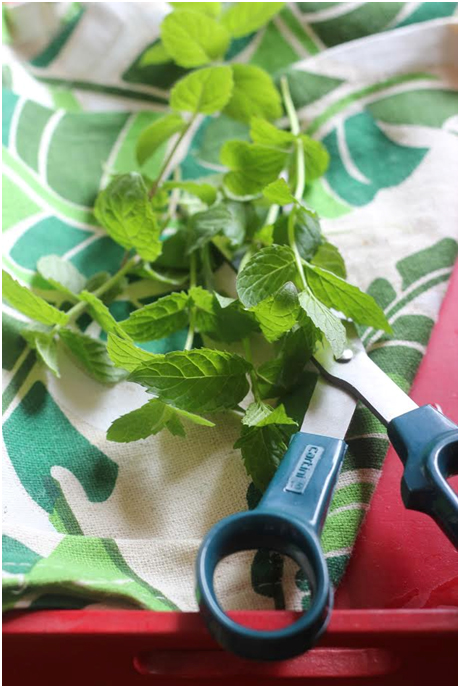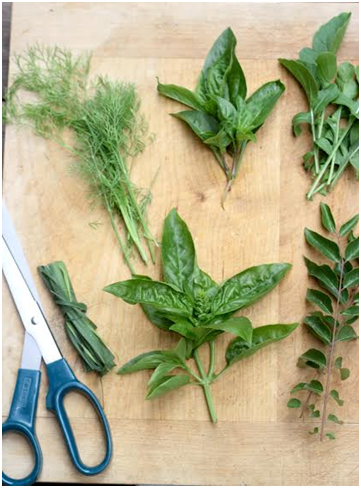BLOG
10 ways to use herbs in your cooking
Herbs are rich in micronutrients, negligible in calories and provide a huge boost of flavour to any dish. These are just 3 of the reasons why no dish is complete without the addition of herbs.

1. Garnish - This is the most common use and the most obvious one too - freshens up a dish and gives it a lovely aroma. Even yesterday's leftovers can be refurbished with a sprinkle of fresh herbs after reheating and it doesn't seem stale anymore. Herbs are best grown on windowsill for garnish as you need very little quantity and just a snip with the Herb cutting scissors and you are good to go.
2. Soup – Cook up a bulk of chopped herbs like rosemary, basil and thyme along with beans and vegetables for a hearty soup and use some fresh for garnish. The cooked herbs add a whole body of flavour to the soup, while the garnished herbs make it look appetizing.
3. Salad – Fattoush is a classic example of herbs playing a main role in a salad. A mix of parsley, spring onion and mint form the green base of a fattoush, topped with toasted pita, cucumbers and tomatoes.
4. Pesto – Pesto is a great way to use up a big batch of herbs. Traditionally pesto is made using Italian basil, garlic, pine nuts, extra virgin olive oil and cheese. There is no reason why you cannot experiment using other herbs.
5. Chutney – While coriander and mint is the most used combination in a chutney, try your own twists such as adding Italian basil to coconut chutney and oregano to a tomato chutney.
6. Pizza sauce – Fresh herbs such as oregano and basil add the classic Italian flavour to a pizza sauce. Even if you are using storebought pizza sauce, stir in some of these freshly snipped herbs to give it a better flavour.
7. Herbal Tea – Herbs like lemongrass, lemon balm, lemon basil, mint, peppermint are great additions to a regular milk tea, adding fresh herbal notes to the cup. They can also be boiled in water, to make pure herbal infusions, that are caffeine free, refreshing and restrorative.
8. Herb infused water – A lot of us struggle to drink the mandatory 8-10 glasses of water in a day. Making herb infused water but adding sprigs of rosemary, mint and bruised lemongrass to your jug of water, adds a subtle flavour and makes it easier to drink water, without adding any extra calories to it.
9. Patties – Herbs pair well with grains like quinoa, brown rice, millets to form patties or cutlets. Adding some mashed vegetables like sweet potato, carrots or potatoes, and mashed beans, you can make delicious tasting healthy appetisers.
10. Roll ups – In Thai cuisine, betel leaves are often used to serve small portions of appetizers. Herbs such as spring onions or chives stuck inside rice paper rolls add flavour and beauty to the dish.
11. An easy way to chop herbs like basil and coriander is to keep the washed dried herbs in a glass mixing jar and using scissors to snip them to a required size.
12. If you are snipping herbs from your garden / pot, using a sharp pair of scissors to cut off the top leaves, also called pruning. This encourages growth of new leaves leading to a bushy plant.

Some herb saving tips
Leafy herbs like mint can be saved in ice cube trays along with water. These make great additions to your glass of water or lemonade. Herbs can also be dried in the shade or a low setting of microwave, crushed and stored in airtight containers. Making a pesto with just olive oil and lemon juice, herbs can be stored in this form in ice trays, using a cube of pesto or two, as required in a dish. Adding garlic and cheese may reduce the shelf life of this, and hence best avoided.
